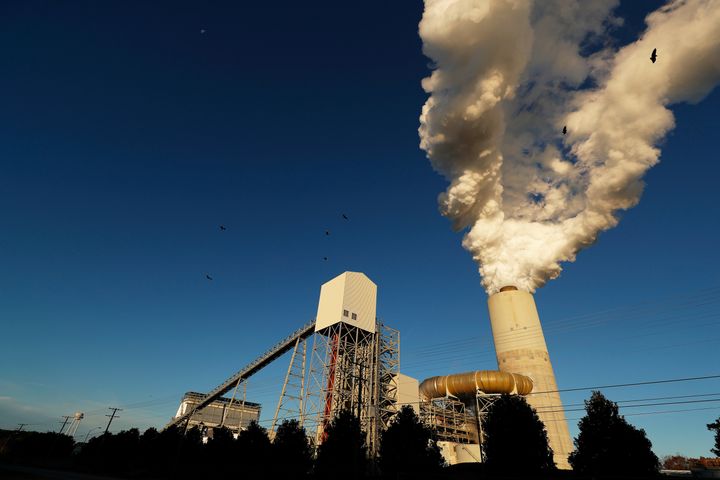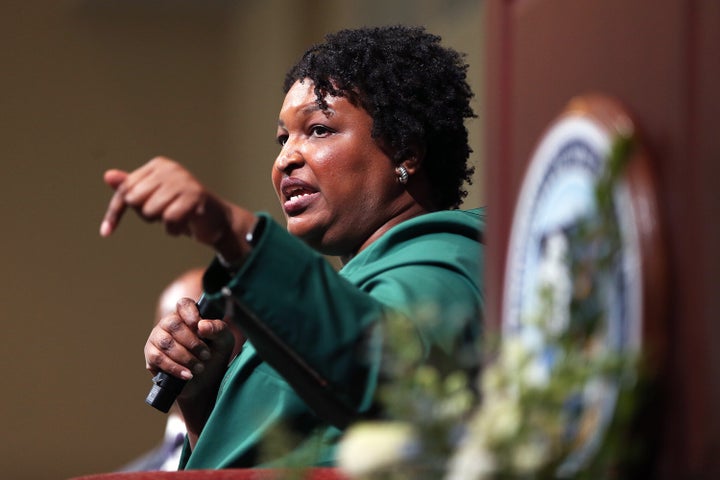
The Southeastern United States faces deadly heatwaves, catastrophic hurricanes and rising seas that have already sent entire communities fleeing for higher ground.
Yet the region remains far behind the rest of the country on even the most basic policies to lower climate-changing emissions, according to research published Tuesday by the Southern Economic Advancement Project, a nonprofit founded by Stacey Abrams, a former Democratic candidate for Georgia governor.
Now, as coronavirus cases are charting a record surge in Southern states, the region’s reliance on aging coal plants risks inflaming infections with air pollution.
This, Abrams told HuffPost in an interview, could help “connect the dots” for Southerners and stop having “esoteric arguments about climate change.”
“We have to understand that climate change is here, that it represents a serious threat to the economy, to our ecosystems and to our people,” Abrams said by phone Tuesday. “The South has untapped potential for economic growth and climate leadership, but we have to be willing to have this as a public conversation.”
The report ― co-authored by the University of California, Santa Barbara’s Leah Stokes and the Roosevelt Institute’s Mark Paul, two heavyweights in the climate policy sphere ― tracked a range of climate issues from wetlands restoration and forest conservation to public transit and electric vehicles, and identified vast potential across the region for economic gains and improvements in quality of life through such policies.
“The human mind has a difficult time wrapping itself around an existential crisis,” Abrams said. “But you can talk to a farmer about low crop yield. You can talk to homeowners and renters about having to evacuate when we have stronger hurricanes.”
The most jarring finding was the degree to which the sun-soaked Southeast has struggled to modernize its electricity system, at great cost to ratepayers and public health. Of the 13 U.S. states that still lack renewable electricity standards and clean energy targets, nine of them ― including Alabama, Florida and Georgia ― are in the South.
Such policies are overwhelmingly successful. Nearly half of all renewable energy growth in the United States since 2000, according to a federal study published last year.
Coal plants have rapidly declined over the past decade. Despite President Donald Trump’s campaign pledge to revive the troubled industry, more coal plants were retired over the past three years than during former President Barack Obama’s second term, when the environmental rules that coal producers have blamed for suffocating the sector were enacted.

Yet coal remained the dominant fuel for electricity in the Southeast, making the utility sector the region’s top source of emissions, with 40% of the pollution share. Replacing 74 of the 77 coal-fired power stations throughout the Southeast with wind or solar would be cheaper by 2025 than keeping the existing plants open, according to the report.
“That means people across the South are paying more for their energy bills than if utilities had requirements to clean up their electricity systems,” Stokes said.
Rather than converting to low-carbon renewables, Southern utilities have largely funded and promoted misinformation on climate change.
For example, Tom Fanning, the chief executive of the utility giant Southern Co., espoused the widely debunked position that carbon dioxide is not responsible for warming the planet as he appeared on national television as recently as 2017. Last year, the company’s board of directors linked Fanning’s pay to lowering emissions. But Southern and other major utilities have focused their efforts on building fracked gas plants instead, which saddle ratepayers with more, if slightly different, emissions and costly infrastructure with a dubious lifespan.
“"I believe access to energy is a human right. We have to treat the ability to survive as a human right, and, in the South, this is one of those moments."”
- Stacey Abrams
“It’s terrible from a climate perspective,” said Stokes, who has a new book out on utilities. “It’s terrible from an air quality perspective, putting people at higher risk of dying from COVID-19, and it’s terrible from a bottom-line perspective in a region where there’s already pretty high energy insecurity.”
Higher levels of the tiny air pollution particles known as PM2.5 were linked to higher death tolls from COVID-19, according to a nationwide analysis of 3,080 U.S. counties that Harvard University researchers published in April.
Southern states also have some of the fewest protections for ratepayers who fall behind on their bills. During months when temperatures regularly exceed 100 degrees, few if any municipalities in the South bar utilities from cutting off service to households that cannot pay, forcing many to go without potentially lifesaving air conditioning.
“I believe access to energy is a human right,” Abrams said. “We have to treat the ability to survive as a human right, and, in the South, this is one of those moments.”
Cooling centers, meanwhile, may carry their own risks as research from the Centers for Disease Control and Prevention suggests air-conditioned restaurants helped spread the coronavirus in China.
For at least straight three days last week, Florida and South Carolina broke single-day records for new COVID-19 cases, The New York Times reported. The uptick in the South, West and Midwest drove the highest U.S. total of new infections since May 1.
